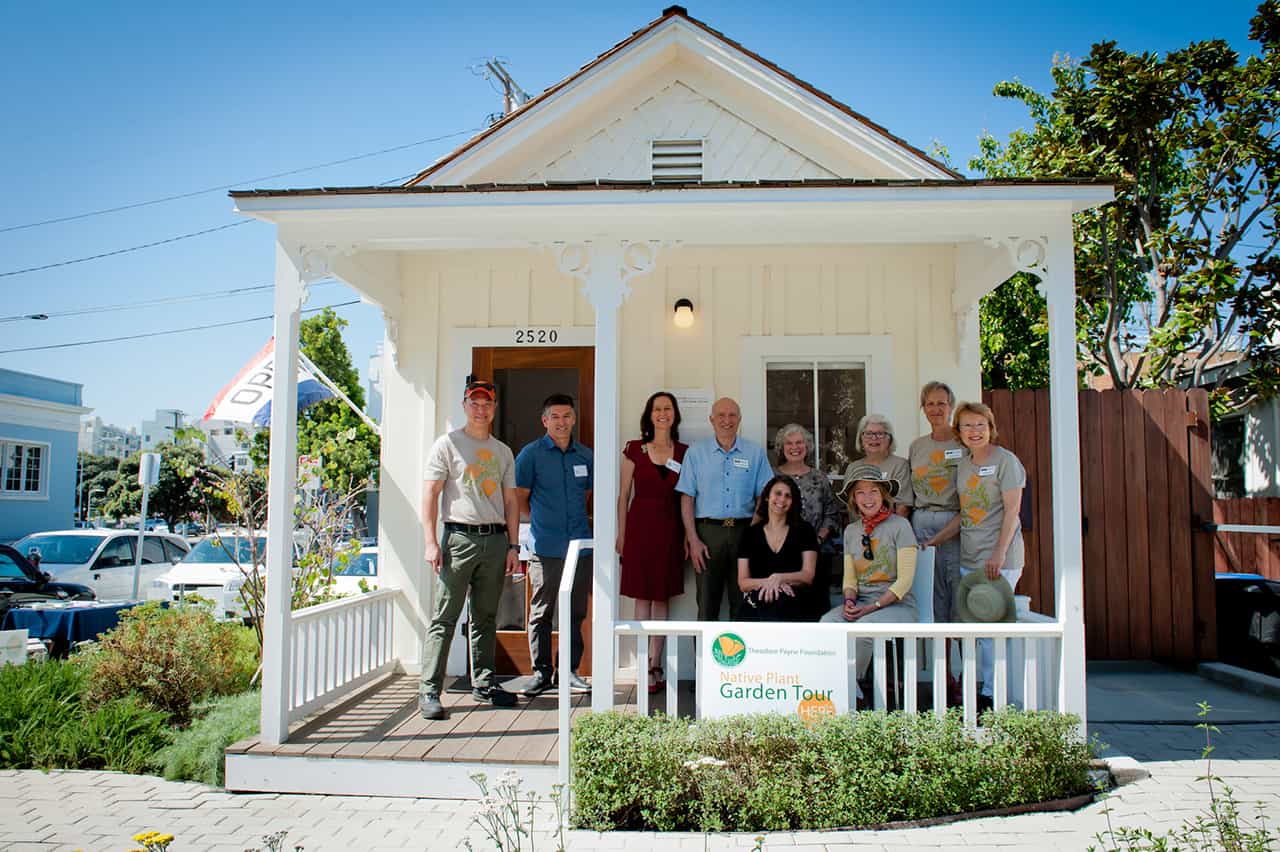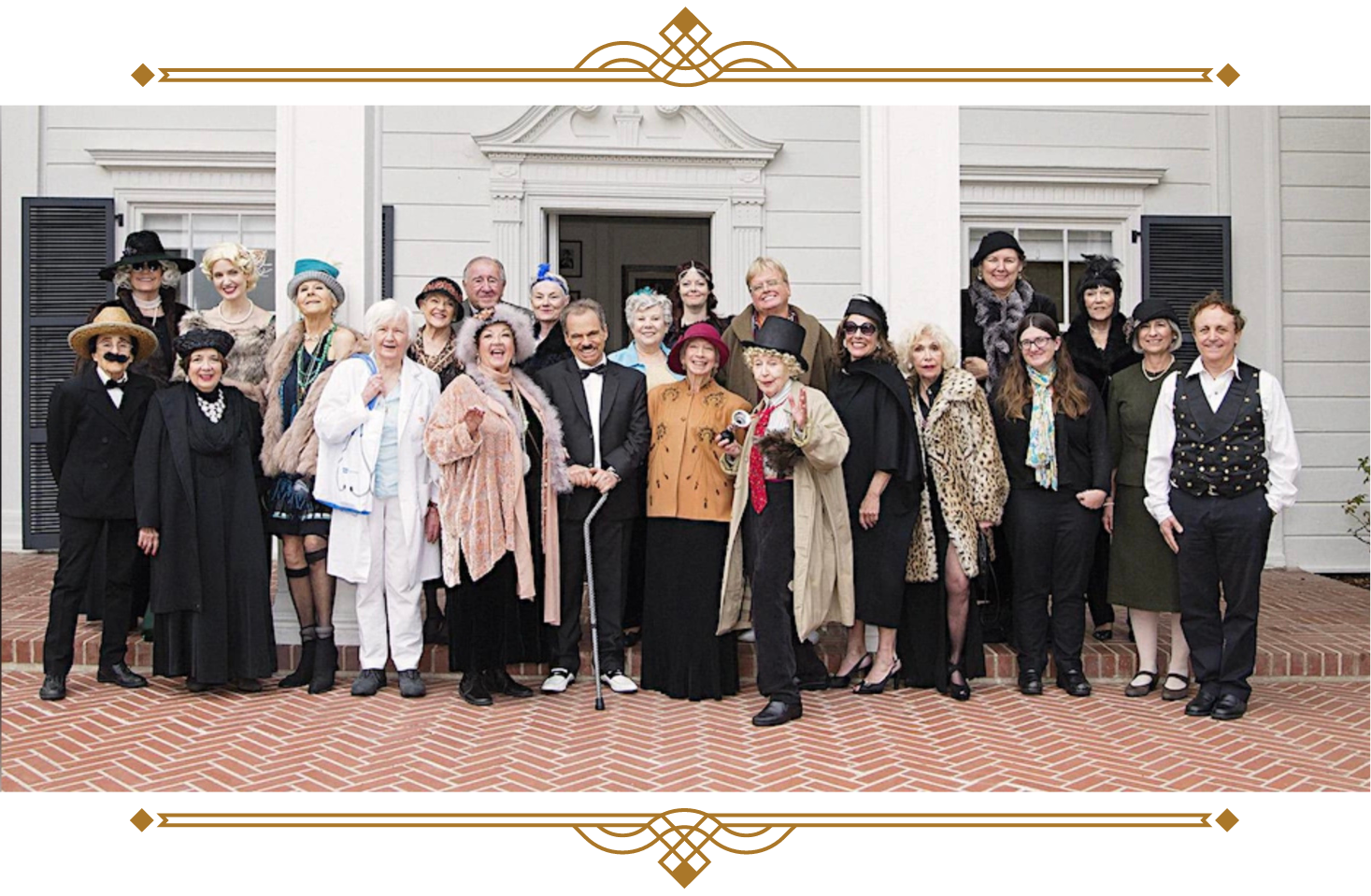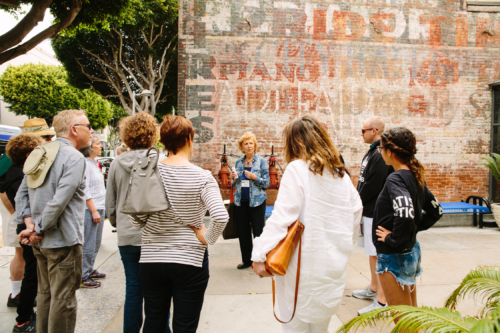Volunteer
The Santa Monica Conservancy is seeking new volunteers. Volunteering is a unique opportunity to make an impact and meet others in the community who share your interest in local history and preservation. Our volunteers actively engage a diverse audience – locals, tourists, history buffs, preservationists, and students – about the architecture, history, and importance of preserving our cultural heritage. Volunteers who commit to at least four events also receive a Santa Monica Conservancy membership, giving them special access to Conservancy programming.
Opportunities are open to anyone with the time and interest. No prior experience is necessary, but if you have experience in coordinating programs, writing, or conducting tours, please note that in your application.
Apply online today or email us at volunteer@smconservancy.org for an application form. Our team will review applications and reach out with additional information. Thank you for your interest!
Types of Volunteer Opportunities:
General Volunteer: Our general volunteers assist with special events and tours. As a general volunteer, your responsibilities may include event support (setup, cleanup, and guest management), staffing outreach tables at community events, assisting with guest registration and crowd coordination, or conducting administrative tasks.
Garden Volunteer at the Shotgun House: Gardening volunteers assist our gardener, Hilda Weiss with the following responsibilities: trimming/dead-heading plants, sweeping debris, shaping our annual/perennial plants and shrubbery. As a gardening volunteer, you will learn about native plants and general gardening, attend nursery and alternate garden field trips. You may also attend a free coffee/lunch after your shift (optional) to chat about your goals about the Conservancy and any questions you might have about the garden.
Docent Volunteer: Become a storyteller of history as a Conservancy docent! After completing training, you’ll lead engaging tours of historic sites and share fascinating stories with visitors. Our docents play a vital role in bringing local history to life, whether through on-site exhibitions or guided walking tours. Docents are asked to volunteer at least once a month.
Docent Volunteers have the opportunity to educate the public on three different historic sites:
Shotgun House:
Built in 1897 in Ocean Park, this little building narrowly escaped demolition through the efforts of a coalition of community activists assisted by the City of Santa Monica. Shotgun houses are small wood frame homes with rooms stacked one behind the other without a hallway, once popular in Ocean Park’s early days for beachfront living. Under the guardianship of the Conservancy, the shotgun house was moved twice before undergoing a comprehensive rehabilitation to become the Conservancy’s headquarters. Tours are offered one weekend a month and includes walks in the Ocean Park neighborhood.
The Shotgun House

Built in 1897 in Ocean Park, this little building narrowly escaped demolition through the efforts of a coalition of community activists assisted by the City of Santa Monica. Shotgun houses are small wood frame homes with rooms stacked one behind the other without a hallway, once popular in Ocean Park’s early days for beachfront living. Under the guardianship of the Conservancy, the shotgun house was moved twice before undergoing a comprehensive rehabilitation to become the Conservancy’s headquarters. Tours are offered one weekend a month and includes walks in the Ocean Park neighborhood.
Downtown Walking Tour
Santa Monica’s downtown is a kaleidoscope of architecture, history, and economic growth from its beginnings in 1875 to the modern city it is today. This signature tour takes a deep dive into Santa Monica places and stories as well as the evolution of the city, providing a rich educational experience for guests. Tours begin at the city’s first landmark, the 1875 Rapp Saloon, which at one time served as City Hall, and include sections of Third Street Promenade, Ocean Avenue, the Palisades, and includes a stop at an Art Deco hotel that housed a speakeasy during Prohibition. Tours are offered the first and third Saturday of every month, starting at 10 a.m. Trainings will be held on Saturdays at 10 a.m.
Annenberg Community Beach House

This world-class destination attracts thousands of international tourists and local residents to its multi-faceted recreational and cultural activities year-round. The site originally was a lavish estate built by media tycoon William Randolph Hearst in the 1920s for actress Marion Davies, who hosted parties for the Hollywood crowd. The Guest House and pool, designed by acclaimed architect Julia Morgan, form the historic core of a place that has evolved over time to the free public beach club that opened in 2009. The ACBH combines historic restoration/adaptive reuse with new facilities by Fred Fisher & Partners that retain memories of the Hearst/Davies era. Tours are offered weekly, Friday – Sunday from 12-2 p.m. during the spring, fall, and winter. During the summer, tours are offered weekly, Friday – Monday from 12-2 p.m.
Join Our Historic Sites Writer’s Circle
The Conservancy seeks talented writers to strengthen our voice in historic preservation and community outreach. We’re looking for dedicated individuals to craft compelling narratives about historic sites across multiple platforms, including local news outlets and Conservancy publications. Writers will work closely with our Communications Manager to develop content for press releases, website content, and educational materials.
Key Responsibilities:
- Create and update historic site descriptions for our digital platforms
- Develop engaging scripts for walking tours and educational programs
- Produce professional content on historic preservation topics
- Build relationships with community groups to uncover local historical narratives
- Create advocacy-focused content for our blog and website

